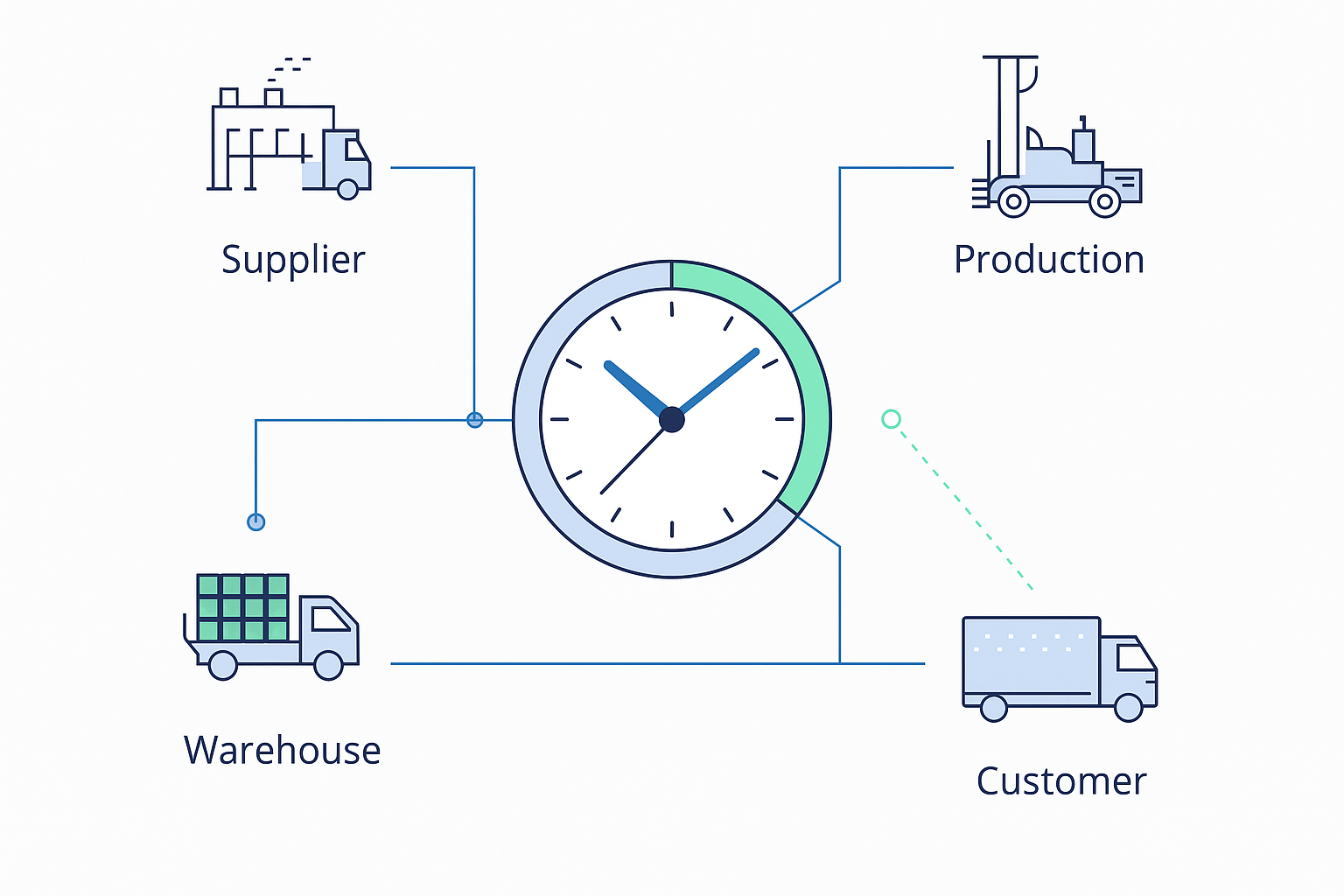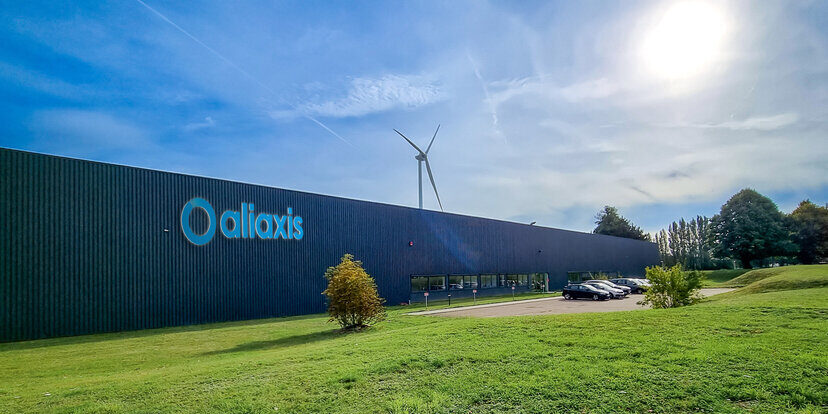Imagine this: a blank canvas, an untouched landscape, an empty page awaiting your story.
A fresh start presents the opportunity to embrace new perspectives, shed old assumptions, and infuse greater flexibility into your choices. Similarly, in the realm of supply chain design, a Greenfield represents a fresh start – a chance to craft a strategic masterpiece from the ground up.
In this blog, we will delve deeper into the world of Greenfield Analysis and its pivotal role in supply chain design. We will cover the benefits, process, and some best practices. To illustrate its real-world impact, we’ll explore an AIMMS use case of greenfield analysis. Let’s dive in.
What is Greenfield Analysis?
Greenfield Analysis is used when setting up a new supply chain facility from scratch, in a new location. The term greenfield comes from construction and conveys the image of a new site that’s ready for development. The goal is to solve the facility location problem by finding the optimal site for a new facility or distribution center.
Why Greenfield Analysis?
Greenfield Analysis (GFA) or Center of Gravity Analysis is used to contrast an existing network with an ideal “blue sky” framework – an imaginative and optimal model unconstrained by current limitations. This method offers a powerful tool to envision what a supply chain could be if built from scratch, without the constraints of existing structures. It’s most commonly deployed in the early stages of supply chain network design.
Greenfield Analysis is the methodology, and the Centre of Gravity Analysis serves as the tool utilized within this approach. GFA finds the ideal locations for a pre-set number of new facilities. It compares your current network with a hypothetical network to reveal the best mix of existing and new locations.
GFA evaluates the logistical needs and potential advantages of new locations, where to build, and how big the facility should be.
Across industries, Greenfield Analysis determines the most effective locations for –
- manufacturing and production facilities
- storage facilities and warehouse locations
GFA is used to assess all potential locations and identify the optimal point that minimizes the distance from all customers to a new facility. Center of Gravity is really about finding a point that is between all your customers. It minimizes the weighted average distance, placing the facility nearer to a larger customer than a smaller one.
It also finds the minimum number of locations to satisfy a certain service level requirement. In other words, you place a facility in the center of all your customers, but you make sure you can reach them all within a specified time, depending on your agreed service levels. This minimizes the number of facilities that you will need.
Benefits of Greenfield Analysis
GFA helps you design a supply chain network that is efficient, flexible, and responsive to change. By enabling strategic supply chain choices, it offers multiple benefits, including:
1. Cost reduction – By minimizing transportation costs, reducing inventory holding costs, and optimizing facility utilization, GFA assists cost reduction in the supply chain.
2. Better customer experience – Facility location optimization helps improve customer service levels. Taking factors like proximity, lead times, and order fulfillment capability into consideration, GFA can improve order cycle and product delivery times.
3. Mitigation of risks – Your Greenfield Analysis will take risk factors like natural disasters, climate change, and political instability into account. By helping you locate your facilities in low-risk areas you can mitigate against these scenarios.
4. Sustainable supply chains – Optimizing distribution center allocation and transport routes enhances your sustainability efforts, reducing carbon emissions, and promoting eco-friendly operations.
5. Better decision-making – With data-driven supply chain insights, GFA evaluates different scenarios to help you make informed decisions that are aligned with business objectives.
The Process
The process of Greenfield Analysis involves a systematic and strategic journey that leads to the creation of a robust supply chain design. Let’s explore each phase in detail.
1. Clearly define your objectives
The starting point is to clearly define the goals and objectives. It could be to locate a store within a two-mile radius of the average customer. It could be to reduce the distance goods have to travel or locate production so each destination is within a certain distance. These factors could be critical in reducing costs, improving service, or finding the best way to enter a new market.
2. Gather supporting data
It’s all about understanding the inputs and limitations – all the issues that impact the supply chain. Depending on what you want to achieve, this could include demand data for each customer and product, customer and supplier locations, existing infrastructure, labor availability, and transport and facility costs. A feasibility study then evaluates potential locations, the availability of resources, as well as local regulations and incentives.
3. Model your supply chain network
Mathematical modeling is then used to evaluate different network configurations and determine the ideal number and location of facilities. In some cases, there may be constraints. Financial or operational issues could limit the number of facilities to be added or the choice of locations. For example, when the costs involved outweigh the potential for profit.
Of course, the model has to be structured correctly. It must include all the critical touch points like cost, customer and node locations, products, and demand, and be tied to your objectives.
In terms of complex and unpredictable supply chains, manual solutions don’t offer the speed, accuracy, and flexibility needed. However, applications AIMMS SC Navigator, which has built-in Greenfield Analysis features, have been developed specifically for the task.
4. Analyze your supply chain network
The analysis encompasses evaluating different scenarios, potential disruptions, and capacity constraints to fine-tune the network design for maximum efficiency. This phase involves determining
- Different transportation modes and routes to optimize the movement of goods
- Customer service levels and cost efficiency
- Inventory levels and placement
- Financial implications of different supply chain network designs
- Identify and assess potential risks and uncertainties
5. Implementation
Based on the analysis of different options, you can now make informed decisions. This could be deciding on the best greenfield locations for proximity, cost, customers that can be served, number of facilities, and demand.
By methodically navigating through these steps, supply chain professionals can create designs that are not only efficient but also primed for adaptability, growth, and long-term success.
Greenfield Analysis with AIMMS
Mexican distiller Cuervo is the undisputed leader in global Tequila sales with revenues approaching US$2.5 Billion in 2022. With 29% of the market share, it distributes over 30 brands in more than 85 countries. Cuervo approached AIMMS to find the best location for new facilities and to minimize transportation costs globally without sacrificing service levels.
Problem – The company was unsure about whether to open a distribution center in Europe and if so, where. To serve the increasing demand, it was also considering a new production facility in the United States.
Another concern was how to transport the product to Europe, be it finished goods or bulk raw materials, and whether to produce it in Europe or Mexico.
Solution – Cuervo used SC Navigator to model the company’s global supply chain to give more visibility of the different flows. Center of Gravity Analysis found potential locations in the U.S. and Europe for distribution or production facilities.
AIMMS then modeled taxes to see the total cost of making a product in Mexico and shipping it, versus producing it in Europe. Ultimately, the solution helped the company optimize its global network.
Results – As a result, Cuervo chose a new location for a distribution center in Europe. It decided when and where to open a production facility in the US, redirecting product flows to reduce freight costs.
Elevate your Supply Chain
It’s evident that greenfield analysis is not just a strategy—it’s a mindset shift. Through the process of data-driven analysis, meticulous site selection, strategic network optimization, and innovative facility design, this approach redefines the boundaries of what’s possible. It’s not merely about tweaking existing structures—it’s about orchestrating a symphony of elements that harmonize to create a resilient, adaptable, and high-performing supply chain.
Discover high-value opportunities with AIMMS SC Navigator’s built-in Greenfield Analysis features.





